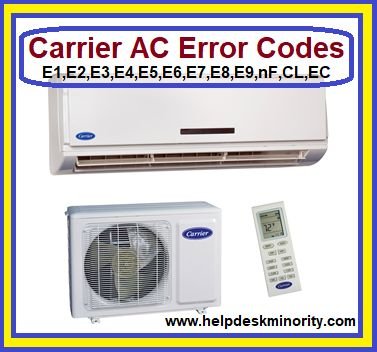
First off, it’s essential to understand that error codes are your air conditioner’s way of communicating. Think of them as text messages from your appliance, letting you know there’s something it needs help with. The E3 code is a common message that indicates a specific issue, usually related to the unit’s fan or airflow. While this may sound complicated, we’ll break it down in simple terms. By the time you finish reading this guide, you’ll feel much more confident in tackling this issue—or at least knowing when to call in a professional.
Understanding Error Code E3: What It Means
So, what exactly does the E3 error code signify? In layman’s terms, it’s your air conditioner’s way of saying, “Hey, something’s up with my fan!” This could mean a handful of things, but it’s often related to problems with airflow or the fan’s operation. Imagine trying to run a marathon with a blocked nose—it’s not very effective, right? Similarly, if your air conditioner’s fan isn’t working properly, it can’t efficiently cool your space.
There are usually a few common culprits when you see an E3 code. One potential issue could be a blocked or dirty air filter. Just like how a vacuum cleaner can’t pick up dirt with a clogged filter, the fan in your air conditioner can’t circulate air efficiently if the filter is dirty. Another possibility might be a malfunctioning fan motor. If the motor that drives the fan becomes faulty, it can’t spin the blades as it should, leading to insufficient cooling power.
Sometimes the issue could stem from the fan blade itself. If it’s damaged or loose, it won’t rotate correctly, causing the system to register an error. Now, while it might seem daunting, many of these problems can often be diagnosed with a bit of investigation. Let’s move on to how you can identify what’s causing your E3 error code and explore some potential solutions.
Identifying the Issue: Troubleshooting Steps
Now that you know what an E3 error might indicate, let’s delve into some practical ways to pinpoint the issue. The first step in troubleshooting is to perform a basic check of your air conditioner’s components. Start with the air filter. Remove it from the unit and hold it up to a light source. If you can barely see light through it, it’s time for a clean. A dirty filter restricts airflow, making your air conditioner work harder and less efficiently, which can trigger that pesky E3 code.
Next, listen carefully to the fan’s operation. Is it making any abnormal noises, or does it seem to be spinning slower than usual? These could be signs of a worn-out motor or a loose fan blade. If the fan doesn’t spin freely, it might need tightening or replacement. While these tasks can sometimes be handled as a DIY project, if you’re not comfortable or if the problem persists, it’s always wise to call in a professional technician.
Inspection of the fan blades is just as important. A bent or broken blade can throw the whole system out of balance, leading to noise and inefficiency. This is akin to having a wobbly wheel on a bicycle—everything else might be in perfect condition, but that imbalance throws you off. If you spot any visible damage, a replacement might be necessary. Once again, professional help can ensure the job is done correctly.
Preventative Measures and Maintenance Tips
Catching and addressing the E3 error on your Frigidaire air conditioner can save you from bigger headaches down the road. But what’s even better? Preventing it from happening again! Regular maintenance is the key to a long-lasting air conditioning unit, and it’s much easier than you might think. Think of it like caring for a garden: a little attention now and then keeps everything flourishing.
Firstly, make a habit of checking and cleaning the air filter every month. This simple step can drastically improve airflow and efficiency, akin to removing blockages from a hose to let water flow freely. If your filter looks a bit worse for wear even after cleaning, consider replacing it. Filters are relatively inexpensive and easy to swap out, often providing one of the best bangs for your buck in terms of maintenance.
Another excellent habit is keeping the area around your air conditioner clean and clear. Dust and debris can accumulate quickly, potentially obstructing the fan or other components. Also, ensure the unit is placed in a well-ventilated spot to avoid unnecessary strain. Finally, consider scheduling regular professional check-ups. A qualified technician can spot early signs of wear and tear you might miss, ensuring your unit runs smoothly for years to come.
In conclusion, while an E3 error code might seem like a bump in the road, understanding it and taking proactive steps can transform it into a minor detour. By keeping on top of maintenance and addressing issues as they arise, you’ll ensure your Frigidaire air conditioner keeps delivering the comfort you expect. Here’s to cool, hassle-free living!